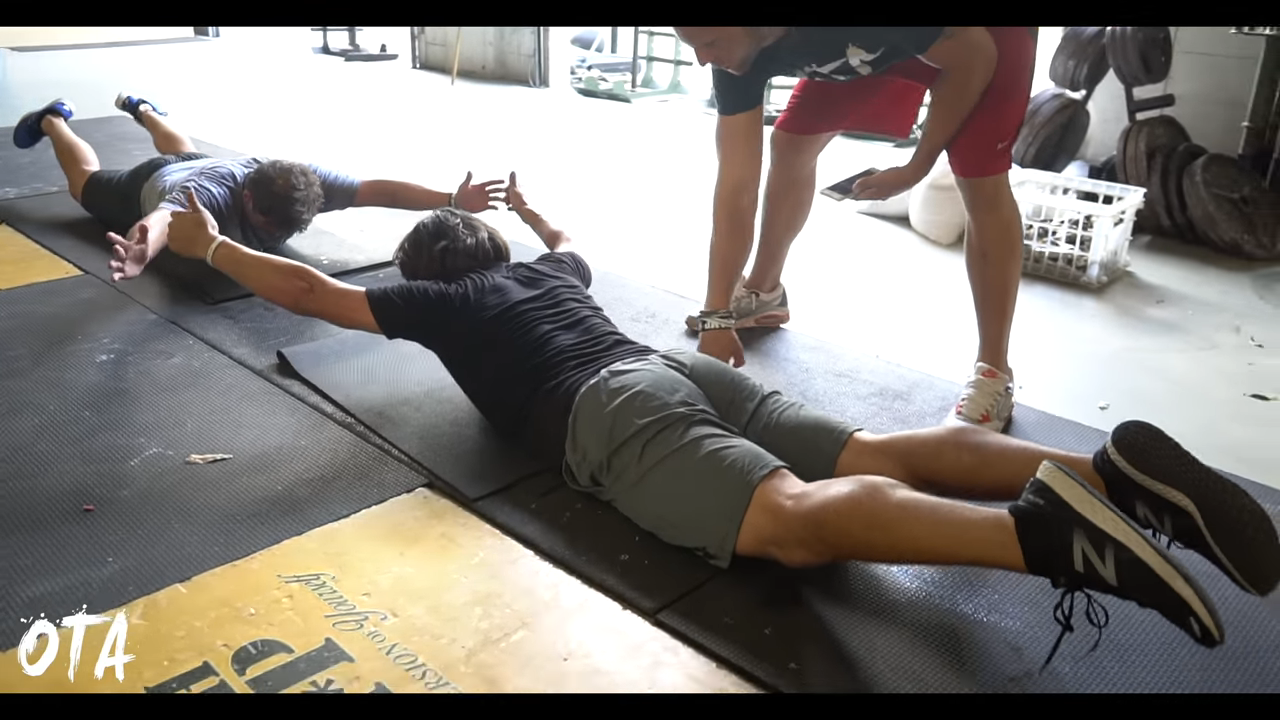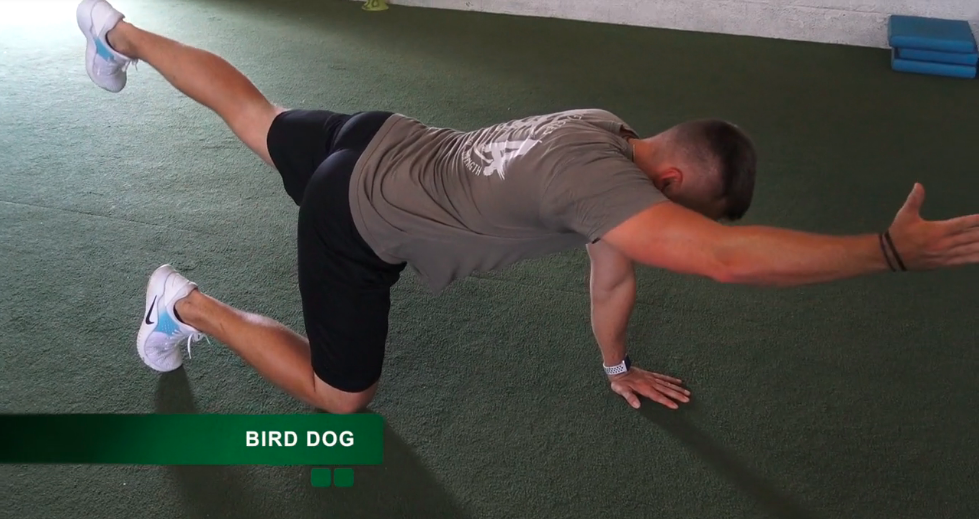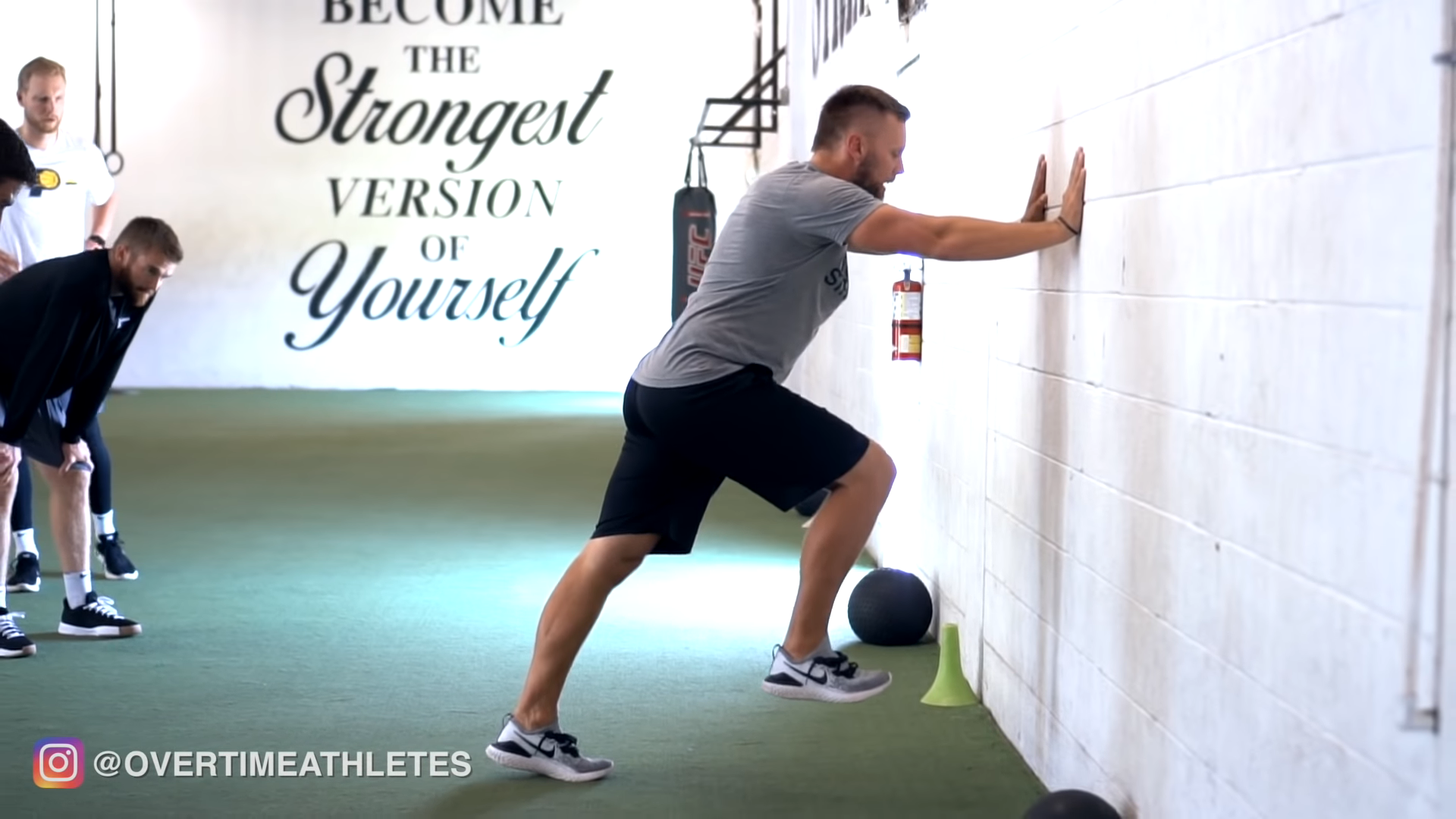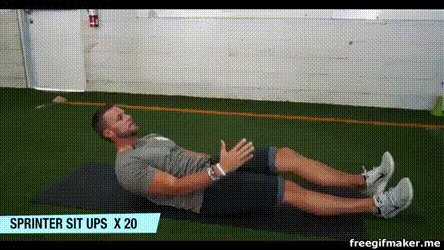7 Best Core Exercises for Speed
Develop a Core That’s BUILT for Speed
Most athletes are making a HUGE mistake. Everyone gets so caught up in speed mechanics, plyometrics and strength when it comes to building speed. For good reason. But, a BIG mistake is overlooking the core.
Having a series of core exercises for speed is absolutely critical if you want to sprint faster. Here’s why:
Your body is a machine. It runs as one single unit. Your trunk, core, or whatever you want to call it is the link between the upper and lower half of your body. And every single athletic movement you perform uses the core to transfer force through the body…
Especially during a sprint.

The trunk is responsible for the transfer of high amounts of force when sprinting at high speeds. If the core is weak and unstable, you will leak force. Leaked force is essentially leaving sprint speed on the table. You’ll run slower AND your speed mechanics will be sloppier if you can’t handle these forces.
In other words, you need a strong and stable core to seamlessly transfer high amounts of force through the trunk and sprint faster. You’ll need to use a combination of various core exercises to build a stable core that’s built for speed.
The various categories of core exercises for speed include stability exercises, anti-rotation exercises, and flexion exercises. Of course, the list I’m going to share with you is not the end-all. But, it’s a good start to develop a core that’s built for speed.
At the end of the list, I’m also going to share how you can plug these core exercises into your training. This way you can be SURE you’re getting the most from your work.
Core Stability Exercises for Speed
Stability is key for speed. As you read above, if you lack stability, you’ll lose power and speed during your sprinting. Obviously, core stability exercises will work the stabilizers. The main stabilizer is the transverse abdominis, which is the deepest abdominal muscle. It activates the core and stabilizes the hips and low back.
Obviously, building the transverse abdominis will be key for improving your sprint speed. Below I’m going to share four core stability exercises that will develop the transverse abdominis, among other stabilizers, and help you sprint faster.
1. Seated Dead Bug
The Seated Dead Bug is a great core exercise for speed. For one, it teaches the athlete to maintain good posture while drawing the ribs down and maintaining a neutral spine. This is key for acceleration, as many athletes have a bad habit of “slouching” during the acceleration phase. Seated Dead Bugs will build up the deep stabilizers of the core as well as develop more superficial muscles. They can also help with low back pain and stabilize the pelvis.
How to Perform Seated Dead Bugs:
- Sit up tall with your legs out in front of you. The knees should be slightly bent
- Pick your chest up. Lean back slightly, and raise your arms up by your ears.
- Keep the chest up and lower one hand down towards your knee. When that hand returns to its starting position, switch sides.
2. Prone Cobra
Prone Cobras are a surprising addition to this list. The Prone Cobra works the posterior muscles that play a big role in a sprint. These include the glutes, erector spinae, rhomboids and more. The main benefit of this core exercise is that it activates the glutes, which are responsible for hip extension in a sprint. Many athletes have trouble extending their hips due to various muscle restrictions. Prone Cobras can help unlock these restrictions and result in a faster sprint.

How to Perform Prone Cobras:
- Start on the ground face down.
- Flip your palms towards the ground and arms out at 45 degrees
- Pick the chest up, squeeze the butt, and pin the shoulders down and back.
- Hold this position for your specified time.
3. Stir The Pot
Stir The Pots teeter on the rotation/stability line, but I’ll throw them in here because the main goal of the stir the pot is to build core stability in unorthodox positions. The Stir the Pot combines a plank on an unstable surface with rotation of the upper limbs. The move also requires the athlete to draw down the ribs, maintain a neutral spine, and tuck the chin. All of these functions will carryover to a faster sprint.
How to Perform Stir the Pot:
- Plank on a swiss ball.
- Make sure the shoulders are down and back and the chest is up.
- Make BIG circles with the arms both clockwise and counter clockwise.
- Perform your allotted reps.
Anti-Rotational Core Exercises for Speed
Anti-Rotations are a commonly overlooked category of core exercise… But, doing them can have a POWERFUL effect on your speed. The main reason is, when you sprint at high speeds, your torso naturally wants to rotate. This has been shown through multiple scientific studies and analyses. Anti-rotations will help you build up the core muscles responsible for resisting that rotation and twisting. These muscles include the internal and external obliques, transverse abdominis, and more.
4. Pallof Press
You might be familiar with the Pallof Press. It’s one of the most common anti-rotation exercises out there. There are multiple ways to perform the Pallof Press, with a band or a cable machine, but I prefer bands. Bands prevent you from going to heavy, and you can easily progress them by stepping further away from whatever object the band is tied around.
Again, this movement will increase your ability to resist the twisting and rotation urge your body has while sprinting.
How to Perform the Pallof Press:
- Tie a band around a rack or pole.
- Step away from the object the band is tied to until there’s a good amount of tension on the band.
- Pin the shoulders down and back, make sure the feet are hip width, and press the band away from your chest.
- When the arms are extended, pull the band back towards your chest.
- Perform slow and controlled reps until your set is complete.
5. Banded March
I picked up the banded march a few years ago at a Pete Bommarito Clinic. This is an advanced anti-rotation exercise that forces the athlete to resist force while moving. I only use this one with my professional athletes, and it should only be done by athletes who have the upmost attention to detail.
How to Perform a Banded March:
- Grab a band and a partner.
- Bend your elbow 90 degrees and raise it to shoulder level laterally.
- Throw the band over that shoulder and get into a quarter squat position.
- Walk 10 yards backwards as your partner follows to keep the tension on the band.
- Switch sides and walk back.
6. Bird Dog
The Bird Dog has NUMEROUS benefits for athletes. It encourages proper core activation and spine stabilization while also integrating the upper and lower half (again, a key for sprinting). Bird Dogs also work hip extension in an unstable environment which can carryover to your sprint. Of course, the reason it’s here is because the Bird Dog also builds your anti-rotational capacity.

How to Perform a Bird Dog:
- Get into a push-up position.
- Keep the core tight and raise your opposite arm and opposite leg straight out
- Make sure the hips stay level. Try to fight any urge to rotate.
- Hold for one second, then switch sides until your set is complete.
Flexion, Rotation, and Extension Exercises for Speed
The final category of core exercises that help you sprint faster is flexion, rotation, and extension. These are your Russian Twists, Superman’s, and more. I’m only going to share a flexion exercises here, but that doesn’t mean the others aren’t helpful.
7. Sprinter Sit-Ups
This is not your typical flexion exercise for the core. With the sprinter sit-up, you pop the knee and arm simultaneously. This works the anterior chain and the connectivity of the trunk and hip flexors. In lay-men’s terms… It simply means it integrates the muscles of the anterior chain in order to make the popping of the knee and arm more seamless and efficient.
This is critical for sprinting, as you can obviously tell, it requires a simultaneous pop of the opposite arm and opposite leg.
How to Perform the Sprinter Sit-Up:
- Start on your back with your legs straight and arms straight.
- Lift your opposite arm up, opposite knee up like you would during a sprint as you raise your whole back off the ground.
- Keep the tongue at the roof of your mouth to prevent your head from protruding forward.
- Lower back towards the ground and switch sides.
Parameters for Core Training
The last bit of info you need to nail down in order to put these core exercises to use is to know the parameters you should use to train the core.
Here are Some Easy Parameters to Follow for Core Training
- Perform core training at the end of your workout. If you do it early, you’ll exhaust your core muscles and it will interfere with your other lifts.
- Select 1-2 exercises and perform 2-3 sets of each. It’s important to give your core muscles just enough stimulus to develop, and not so much that you overtrain.
- Do your core training four times a week. Studies have shown that training frequency can be just as important as volume.
- Stay between 8-15 repetitions
The Complete Speed Training Program
Core training is just one aspect of speed training, which is complicated and can be irritating sometimes.

That’s why I’ve boiled speed training down to it’s purest, simplest, and most effective form in Athletic Speed System. In fact, this system is so pure, it has athletes sprinting faster during their first week of training.
Example:
Spencer from Colorado shaved 2.6% off of his 10 time in ONE DAY. I can’t even imagine what he’ll do after using the full program.
Anyway, that’s enough hype for the day. If you want more information, head over to the link below to read more about it:
Click Here for a Sneak Peak into The COMPLETE Speed Training Program
